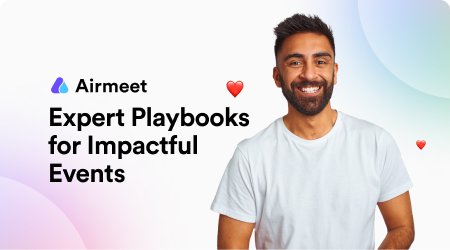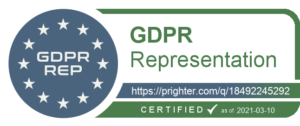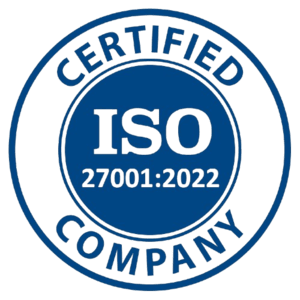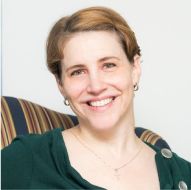Becoming event-led is a mindset. This means with the right mental shift anyone can do it—but it will involve two transformations.
First, the marketing team has to shift their focus from generating leads to building relationships. It seems like a simple enough move, but the implications make a world of difference. In order to build relationships, the team must create direct communication channels that are not just primed to sell, sell, and sell more, but also provide value through education, nurturing, and celebrating customers—present and potential.
Second, the very way you think about events needs to change. In our busy, saturated digital world, events need to give attendees energy, not fatigue. That means curating smaller, more focused sessions that are segmented and targeted toward different audiences—whether that is to learn something new, make the right connections, or pick up the knowledge to extract the most value out of your product or service—depending on where they are in the journey.
It sounds like a lot. But here’s a simple framework to take a step in that direction.
Change how you view the funnel
Not all marketing-generated leads should be treated equal. Marketing efforts shouldn’t focus on driving these leads from direct-intent channels only. Segmenting leads into high, medium, and low intent not only lets you set clear definitions, but will also help you learn where your marketing is falling short right now.
Ask yourself:
- Do you run enough top-of-funnel campaigns?
- Are you limited by your intent-only channels?
- How much opportunity to capture market share are you leaving on the table?
Second, not all marketing efforts end when the revenue hits the bank. The event wave continues well after the deal is inked. ELG facilitates a level of ongoing engagement that leads to customer affinity that’s ripe for loyalty and referrals.
Folding ELG into your marketing philosophy will look something like this: Events are planned all along the journey as accounts progress from one bucket to the next—eventually resulting in revenue and—if you plan for it—referrals. Mapping an event is no longer a siloed activity but a collaboration between several departments.
The event wave, therefore, is more fulsomely supported to educate, raise awareness, and drive community in order to accelerate the account progression and cut the sales cycle way down.
YCombinator took a creative approach to their flagship event, widening their funnel to engage with a steady flow of low-intent leads, and that simple shift resulted in new business growth.
“YCombinator had a women founders event that started in 2013, called the Female Founders Event, it was an in-person event and the focus was about connecting women entrepreneurs,” says Lindsay Selvitelle, YC’s Director of Events. “After Covid happened, we saw an opportunity to evolve the event. Instead of connecting women founders, we shifted the goal and adopted a more Top of Funnel Approach. We believed that if we convinced women who are just thinking about starting a company rather than those who have already done so, then eventually this will increase the number of women who apply to YC.”
Understand your audience
When you look at signals of interest and intent, clear groups will start to arise. The more focused the groups, the more niche your topic, and the better and more valuable the event is for your attendees.
Whereas in the past, event guest lists might be lumped together by job title alone, many more nuanced ways to approach your audience selection will take your event from content-first to connection-first.
You can create focused groups based on:
Pain points—giving your event a natural agenda to help solve for these issues
Engagement level—a group of people who share an interest in connecting with others
Funnel placement—content for a ToFu audience will be wildly different than for a BoFu audience
Physical location—fostering meaningful, local networking opportunities for your attendees
“5-to-9” interests—developing buyer affinity by tapping into a client’s passions
The more upfront work you do to determine your desired outcomes, the easier it will be to choose an audience segment to build your run of show around.
Find your why
Think of events as your brand’s own thought leadership—what ideas are you putting out into the world and how do those ideas promote growth for your company? Another way to think about this: every event needs a narrative. Stories and narratives make for unforgettable experiences—without them, your attendee might not understand why your event is even happening in the first place.
I think it’s really understanding a great run of show. How can we create a theme that ties in that overall business goal we’re looking to achieve? You always have to create the attendee takeaways where you’re starting with the end in mind.
Nick Bennet, Director of Community at Alyce
Starting with that end in mind will help you align your “why” with the attendees, creating a more focused, attendee-first event.
Ask yourself:
- Why would an attendee come to your event?
- What are their goals?
- How do their goals relate to yours as an organizer?
No matter which segment in the customer journey your event caters to, it’s about creating memorable, targeted experiences that all come back to your “why.”
Stacking your ELG calendar
An ELG calendar is a series of events that caters to prospects, buyers, customers, and advocates. These events open up a pathway for high intent folks to influence those with lower intent, and for your customers to influence prospects who aren’t sold yet.
In short: events shouldn’t be big, splashy, once-a-year experiences when they have this much potential to move the needle for your business. At each turn, ask yourself: how do we make sure our customers end up expanding their use cases with us?
The event types you choose will tie everything together; you have your why, you have your intended outcomes, and you’ve chosen your audience—now what format will enable the most connection and drive the most value for your attendees?
Are you targeting an audience segment that rarely indulges in the engagement channels that exist today? Think outside the box for a format that might entice them. Use the data you gather in the sign-up period to dynamically personalize an attendee’s agenda to help them connect with those who share their challenges or skill sets. The key here is to always think attendee-first and connection-driven.
When choosing the right format for his events Nick Bennet of Alyce uses a One-to-Many, One-to-Few, and Exclusive framework. “It’s all about creating an attendee-first experience—part content and part experience but they walk away feeling something special at the end of the day.”
One to many: Obtaining wider reach through small events to increase brand awareness and credibility through a credible speaker (ex: a webinar)
One to few: Providing a unique networking opportunity that talks about innovation and best practices (ex: a roundtable)
Exclusive: A VIP experience that reaches the power base faster and builds and strengthens those relationships (ex: an in-person event)
When you think of events as more than just lead generation opportunities, you hit all segments of your audience with experiences designed just for them. “Using events just for lead generation and MQLs is an old approach,” says Aleksandra Panyukhina, B2B Field & Event Marketing Leader. “If you think your job as a marketer is done when you pass over whatever might qualify as MQL and move on to the next event, your efforts will never pay off.”
An ELG approach will continuously associate your brand with leadership in your field and will keep you at the forefront for customers just waiting to move down the pipeline while nurturing the relationships you already have.
“Events are a tactic you can (and should) use everywhere.”



























